Check this out:

That’s a carbonatite dike cutting through cleaved mudrocks of the Chancellor Formation. Carbonatite is weird lava which gets its odd composition presumably from the melting of carbonate (limestone/dolostone/marble) source rocks. There’s only a single carbonatite-erupting volcano in the world today, Ol Doinyo Lengai in Tanzania.
The mud of the Chancellor Formation is Cambrian in depositional age. The dikes are probably Devonian in age, and perhaps related to the 368 Ma Ice River Complex, found in Yoho National Park, British Columbia, Canada. That’s also where you can visit this outcrop, on the south side of the TransCanada Highway. My students and I stopped there two weeks ago, based on a recommendation from Ben Gadd’s book Canadian Rockies Geology Road Tours (p.155).
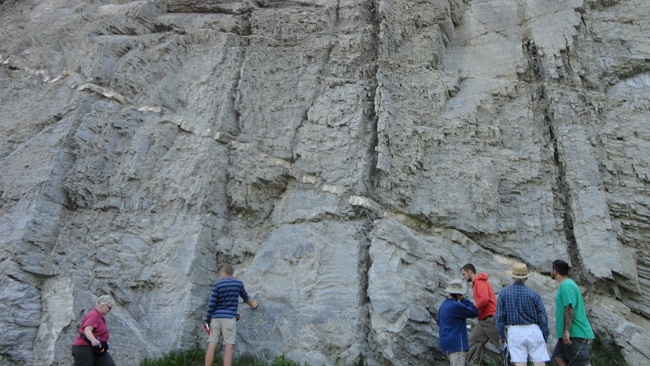
Here’s a look at the host rock, in the form of a boulder spalled off the outcrop face…
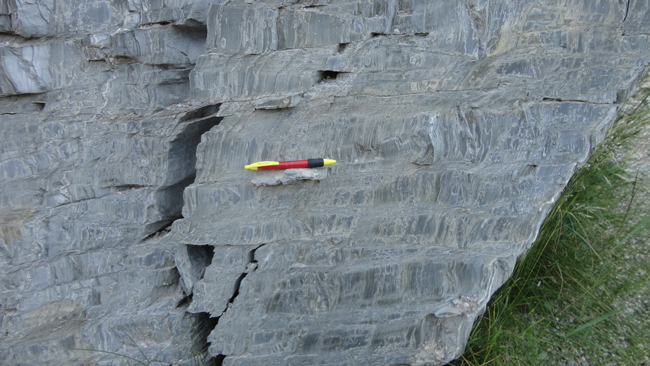
Going closer (keep in mind this would have to be rotated 90° clockwise to match the in situ orientation of the rocks in the cliff.
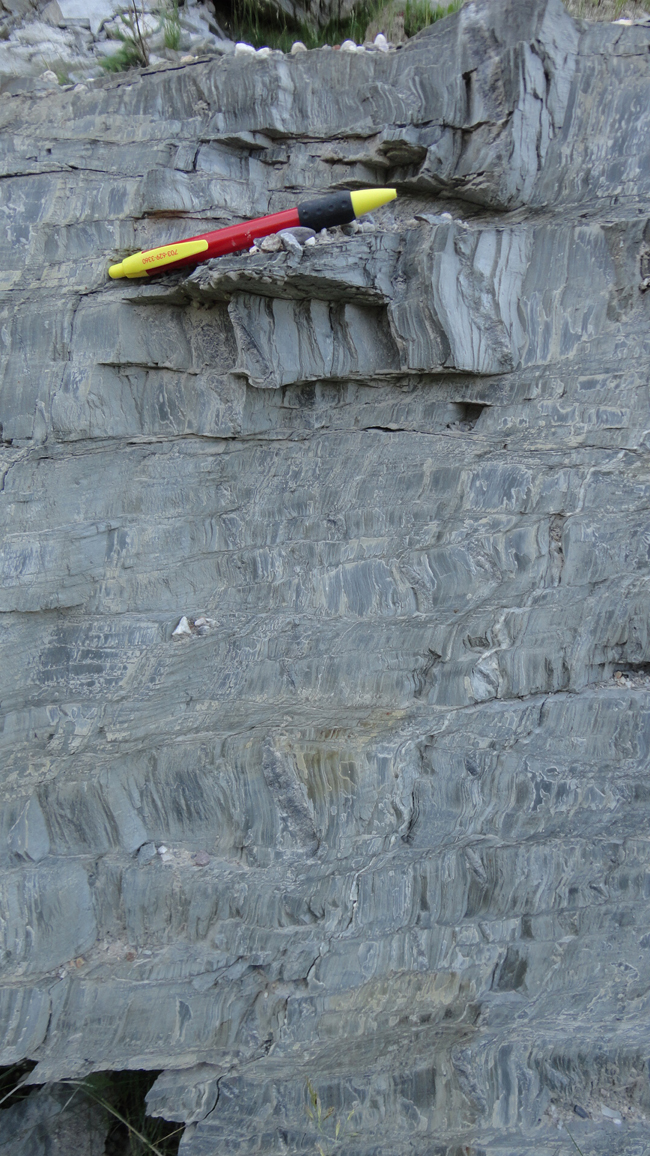
Annotated:
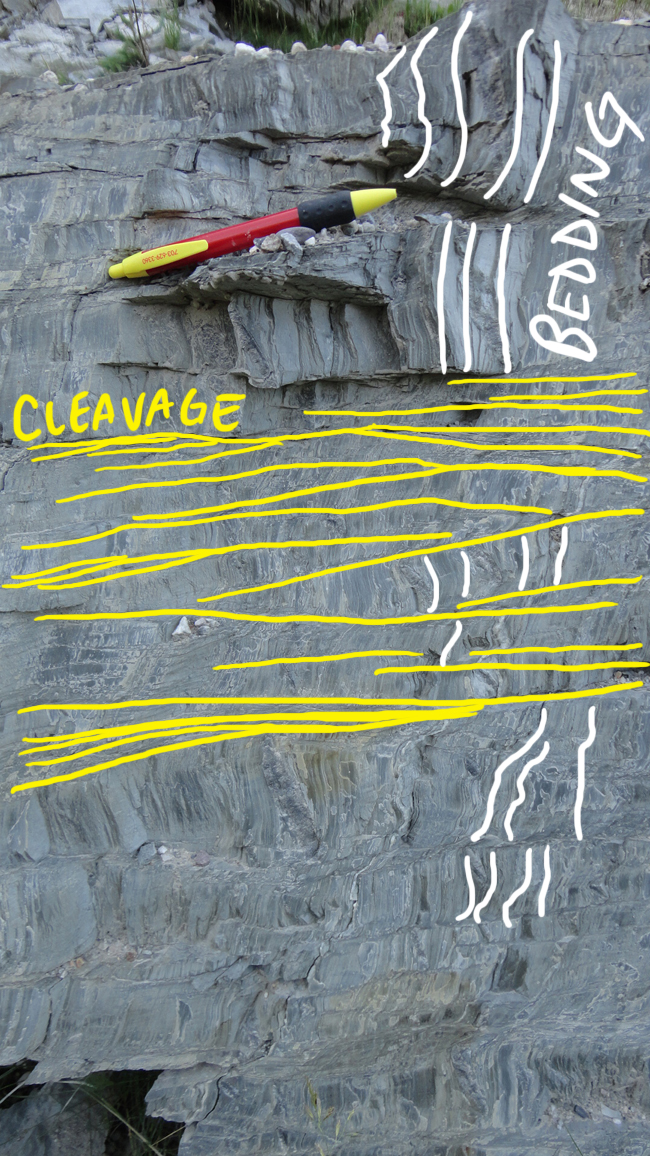
When we take a closer look at the dikes, we see an odd zebra-striping pattern:
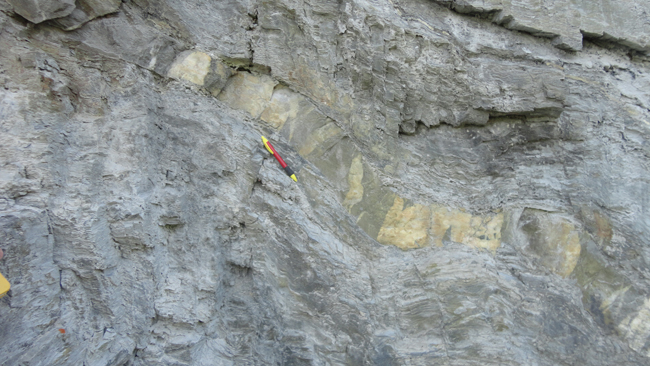
It appears that these dikes were stretched (boudinaged), with vein material being precipitated in the spaces that opened up between the fragments of carbonatite. Take a look – here’s the same photo, with dike/vein contrast jacked up to “11,” and annotations:
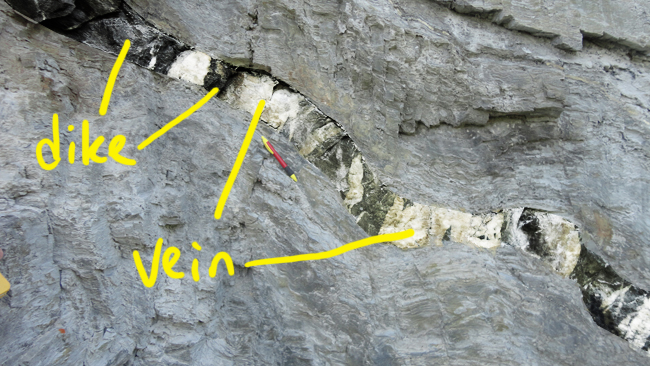
This white-colored vein material was of mixed mineralogy – in places, my students found it to be composed of calcite, in other places, quartz was seen.
The dikes/veins are also folded! The brittle boudinage must have happened first, then the dikes were compressed into open folds.
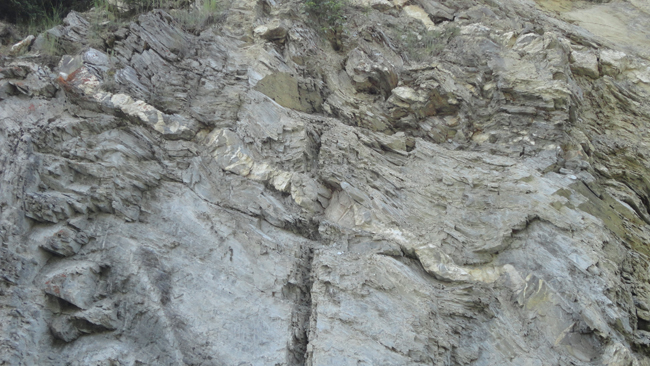
(This need not necessarily imply two temporally separate generations of deformation, but may represent these rocks shifting from the extensional field to compressional field as a consequence of rotation during a single episode of deformation. It would be neat to check dikes of different orientations to test this idea, but all these were in roughly the same position, dipping shallowly to the west…)
In places, the folding is much tighter…
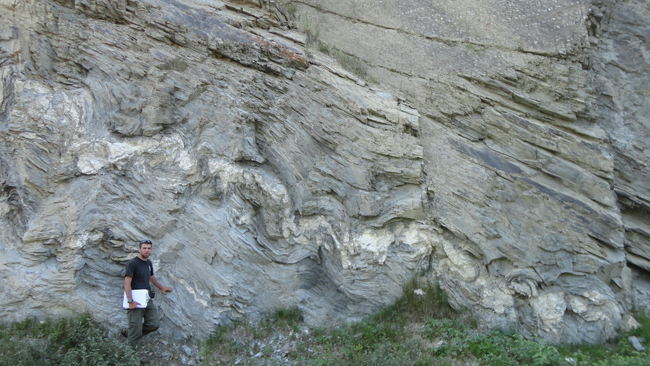
Here’s one boudin (from the lower right of the previous image) that’s been isoclinally folded:
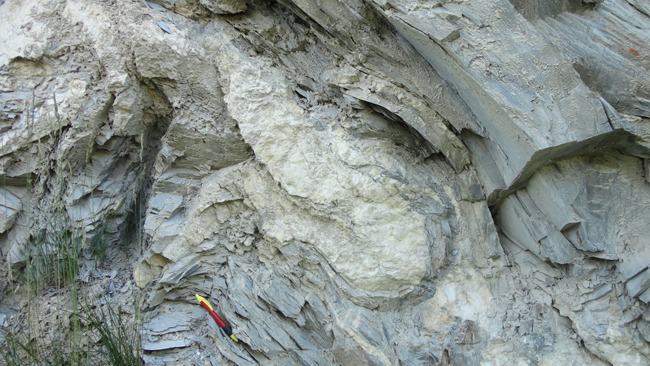
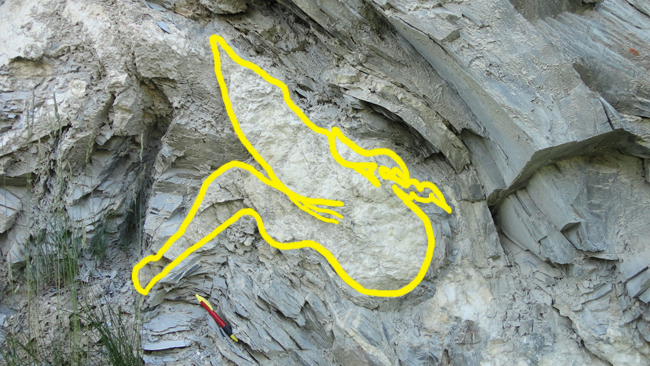
Asymmetric fold in bedding:
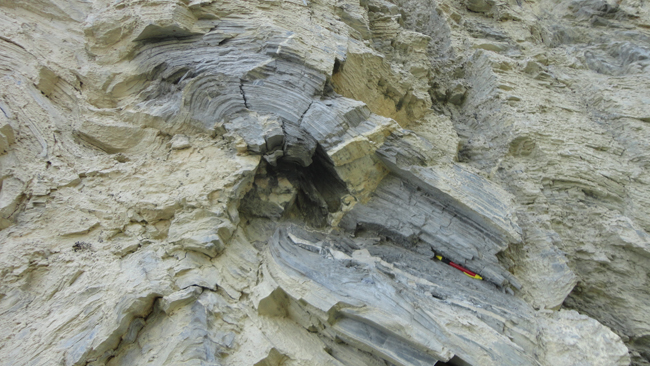
Bedding and vein material, arched into an antiform:
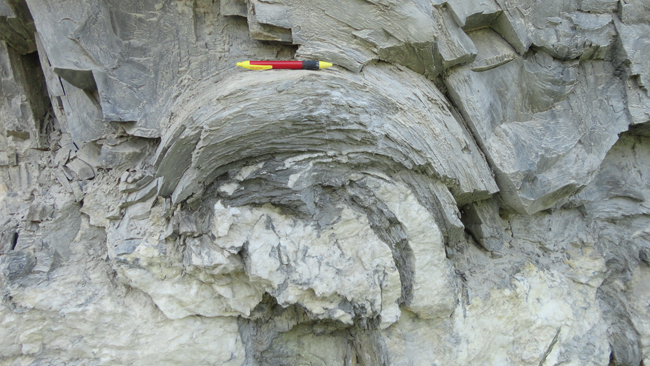
There was a lot to look at, document, and talk about at this stop.

Those are some amazing rocks!! Thanks for sharing these photos & descriptions.
Note, however, that carbonatites are not produced by melting of carbonate source rocks. Rather, they are sourced from the mantle. Their genesis is not totally clear, but they aren’t derived from crustal carbonates that are later melted.